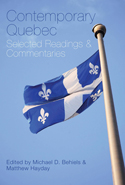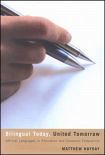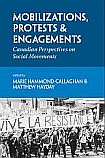Silencing or Strategic Manoeuvring? Professor Strong-Boag, International Women's Day and the Canadian Museum for Human Rights
For the past three days, my Facebook and Twitter feeds have been filled with a series of re-posts and re-tweets related to Professor Veronica Strong-Boag's blogpost about International Women's Day (IWD) for the (still-to-be-opened) Canadian Museum for Human Rights. According to the detailed report on ActiveHistory.ca, containing Strong-Boag's post and commentary about the story, she had been commissioned by the Museum to write a post about IWD for their collective blog. When she submitted the blogpost, it was initially approved, and then withdrawn when the communications department expressed concern over her comment on the current Conservative government. As a result, historians from coast to coast have been decrying the "censorship" and "silencing" of Strong-Boag by the museum (and speculating that the current federal government might have had a hand in this).
Shortly after the ActiveHistory piece was published, Franca Iacovetta, professor of Canadian history at the University of Toronto, and the current president of the International Berkshire Conference of Women Historians, published a condemnation of "the effort to silence Canada’s leading women’s historian" on the Berks website. Since that time, PressProgress has added their voice into the mix, commenting on the irony of a human rights museum censoring a commissioned blog. Both of these pieces have also received extensive coverage on Facebook and Twitter.
I have a somewhat different take on these events from many of my historian colleagues, and would posit a working theory. I suspect that Prof. Strong-Boag might have known full well (or at least strongly suspected) that her blogpost for International Women's Day, which only includes one reference to Canadian governments past or present and does so to highlight the "anti-woman record" of "Canada's Conservative government", was never going to be approved by the Canadian Museum for Human Rights. The museum has been mired in controversies and funding crises for years - even before it has opened to the public. The people who commissioned the post probably were hoping for a broad overview of the history of International Women's Day, or perhaps a post that included some discussion of how Canada's governments (past and present) have dealt with women's issues. This is not what they received, and someone probably balked at the fact that the sole reference in the post to Canada's governments was a partisan attack on the current Conservative administration. An offer to add more detail to support the assessment of the current government as "anti-woman" was probably even less welcomed.
Here's where I think the story gets interesting. By being "censored", Strong-Boag has ensured that her message gets diffused to a much wider readership than the original blogpost itself likely would have been. It is a fairly standard social movement tactic to try to create a situation (a "grievance" to use the social movement scholarly jargon) that will lend itself to media exposure, with the movement able to cast itself as the aggrieved party. This helps to generate broader-based support for the movement, which is crucial to resource mobilization. I very strongly suspect that the vast majority of people who have commented and re-posted this story have never before read the blog of the Canadian Museum for Human Rights, and would not have seen the post had it simply been posted there. I had to scroll back to August 2013 to find a post on the CMHR blog that had a comment on it. It also isn't a blog with a rich history of guest postings - only six names of guest bloggers appear on their contributors roll. The ActiveHistory.ca website, on the other hand, has a widespread readership among Canadian historians and engenders a lot of commentary. The Berks is the main conference on women's history in North America. Far from being silenced, the decision by the CMHR to remove the post as written from their site has meant that Strong-Boag got a series of major platforms to attack the Harper government's record on women's rights, and along the way to damage the CMHR's reputation and cast suspicion (possibly warranted, although this is unproven) of a sinister federal hand behind the removal of the blogpost. Meanwhile, there is no post for International Women's Day on the CMHR blog.
To be perfectly clear, I don't disagree with Strong-Boag's stance on the Harper government's policy record. But nor am I surprised that the museum would have shied away from her post. Strong-Boag engaged in a direct partisan attack. A paragraph discussing past-and-present Canadian governments' decidedly mixed record on women's issues (perhaps including Trudeau-era restrictions on the National Action Committee on the Status of Women's lobbying efforts that were linked to their government funding, or the successive failures of a series of federal governments to make any meaningful progress on the childcare agenda) might possibly have made it past the communications officers at the CMHR. At the very least, it would have been harder for a communications officer to defend the removal of a blogpost that presented a more balanced critique of the less-than-stellar record of Canada's federal governments (Liberal and Conservative) on women's issues that placed the current claw-backs in their historical context. But to me, the section on the current government in the post as currently written reads as an isolated (if deserved) swipe at the government of the day and explicitly partisan.
If this was a deliberate strategic move on Strong-Boag's part, it has worked beautifully, so kudos to her for getting her message disseminated. Far more people have read her account of IWD than likely would have ever seen it on the CMHR blog. I just find it a little bit disingenuous to speak of silencing and censorship in what appears to me to be a case of a museum trying not to appear to be overtly partisan in its public communications. Even if it could have been claimed that this was a "guest post", the museum would have been held accountable in the media, and with their various funders, for the content that appeared.
UPDATE (March 9, 3:10 PM): The story is now on the CBC website, with additional commentary from Strong-Boag, and a reply from the museum's blog editor.
Labels: ActiveHistory, Canadian history, Canadian Museum for Human Rights, censorship, Conservative, Harper, International Women's Day, public history, social movements, Veronica Strong-Boag, women
Recommend this Post





6 Comments:
One of the commenters on Active History posts an interesting news article about the museum from 2012:
"...Eberts's comments echo the concerns of many current and former employees contacted by CBC News.
They said government and corporate interests may be having an impact on what will ultimately be included in the museum. Staff also said they have been told to include more "positive stories," and to curtail criticisms of issues touching on current government policy..."
http://activehistory.ca/2014/03/international-womens-day-iwd-and-human-rights-2014/#comment-45995
I would see this as part of the current government's tendency to bully and silence public servants including scientists and museums staff.
I agree that there is a broader trend going on right now of the current government trying to silence and control public servants.
On the other hand, we are talking about a government-funded museum, and I cannot think of any such museum (in Canada or elsewhere) that engages in direct partisan criticism of the government of the day (now, or in the past) in what could be perceived as its official communications. My main point in this post is that there was a line around partisanship that was clearly crossed and would likely have been rejected by any museum funded by its government.
The more recent statements that have emerged from the museum about avoiding "political" content is more troubling, but that is part of a larger conversation about how this museum functions, rather than the specifics of this blogpost. Those issues do clearly need to be engaged with.
Matt, you agree "that there is a broader trend going on right now of the current government trying to silence and control public servants."
Yet, you argue that a museum dedicated to human rights is an inappropriate venue to engage in public discourse about the status of human rights (specifically women's rights) in contemporary Canada... on the grounds that is 'government-funded'?
What, in your opinion, is a suitable public sphere to engage in a discussion about these issues?
Universities? Research Institutes? Libraries? The CBC?
Following your logic, these organizations should not engage in public discourse regarding human rights in contemporary Canada - because it might be misconstrued as 'partisan' or perceived by the public as the 'official' communication of these organizations.
What a dangerous precedent.
I urge to read about an exhibit at the Anne Frank House in Amsterdam titled "Free 2 Choose".
Holly: As I point out in the more recent post on this topic, I don't believe that the museum should completely avoid politically-charged topics: http://pamplemoose.blogspot.ca/2014/03/canadian-museum-for-human-rights.html . However, I believe that there is a need to establish whether or not the materials are explicitly partisan. The CBC, which you mention, is routinely scrutinized by its ombudsman and there are regular statistical analyses of its election coverage, for example, because it is not supposed to be partisan. Universities, on the other hand, explicitly protect the academic freedom of their faculty.
I am not arguing that just because an organization receives any government funding at all means that it cannot engage in partisan debate - or that its employees must refrain from this. But there are varying degrees to which institutions, and their employees, are considered to be direct government agencies or arms-length or autonomous organizations, and that has an impact on their need to be perceived to be non-partisan.
As I also mentioned in this post, I thought there was a way that Prof. Strong-Boag could have made her point about a lack of government commitment to women's rights without including a line that effectively said "The Conservative government has an anti-woman record." The partisan nature of that statement is pretty clear.
As a museum professional with a background in political science I can't tell you how much this topic fascinates me.
Thanks Matt for your response. I think we agree, in principle, that museums (especially those dealing with collective memory) are public spaces for dialogue and debate - even political in nature! I also appreciate your distinction between political and partisan debate. However, I think we disagree on what it means in practice.
You suggested that Prof. Strong-Boag could have expressed the same ideas by using different language... this proposal seems both trite and oddly troubling.
There seems to be a growing trend that any conversation even remotely political can be framed as 'partisan' by those wishing to dismiss the validity of the discussion.
I do not suggest this is true in your case. But for the sake of open and democratic debate we should err towards a more fluid understanding of what constitutes partisan behaviour...
CMHR fussed over the semantics of a few sentences in a guest blog entry and grossly mishandled an opportunity. They failed to examine the situation in relation to 'the big picture' - their mission statement (hence the embarrassing backlash).
It was an explosion of sensitivity gone awry.
In other news, museum directors in Russia have signed a statement in support of Putin's actions in Crimea:
http://www.theartnewspaper.com/articles/Some-Russian-museum-leaders-back-Putins-move-on-Crimea/32052
Now that's what I call partisan!
Thanks for the provocative posts.
Best wishes from Norway :)
Holly: I think we probably agree on a number of key issues here. As I mention in my other post, one of the key concerns for me is that there should be a more open conversation about the issue of partisanship, what it means in a museum context, and what our historians do or do not consider to meet the threshold of partisan behaviour.
I don't think that a blanket statement that "everything goes" - not that you are proposing this - is helpful, particularly from the museums' perspective, where they are trying to establish guidelines that they can defend both to their funders and the general public. It would be useful for the academic community to participate in this debate and engage with this issue directly. From my own perspective, I suspect that the museums are going to want some clear guidelines so that they know what they can publish or exhibit - and those guidelines might provide a shield against the chill effect that otherwise might lead them to perceive partisanship where it does not cross such a line.
Post a Comment
<< Home